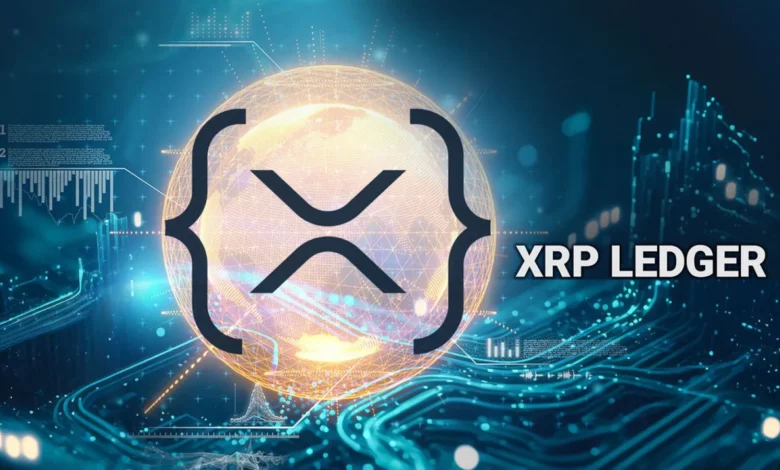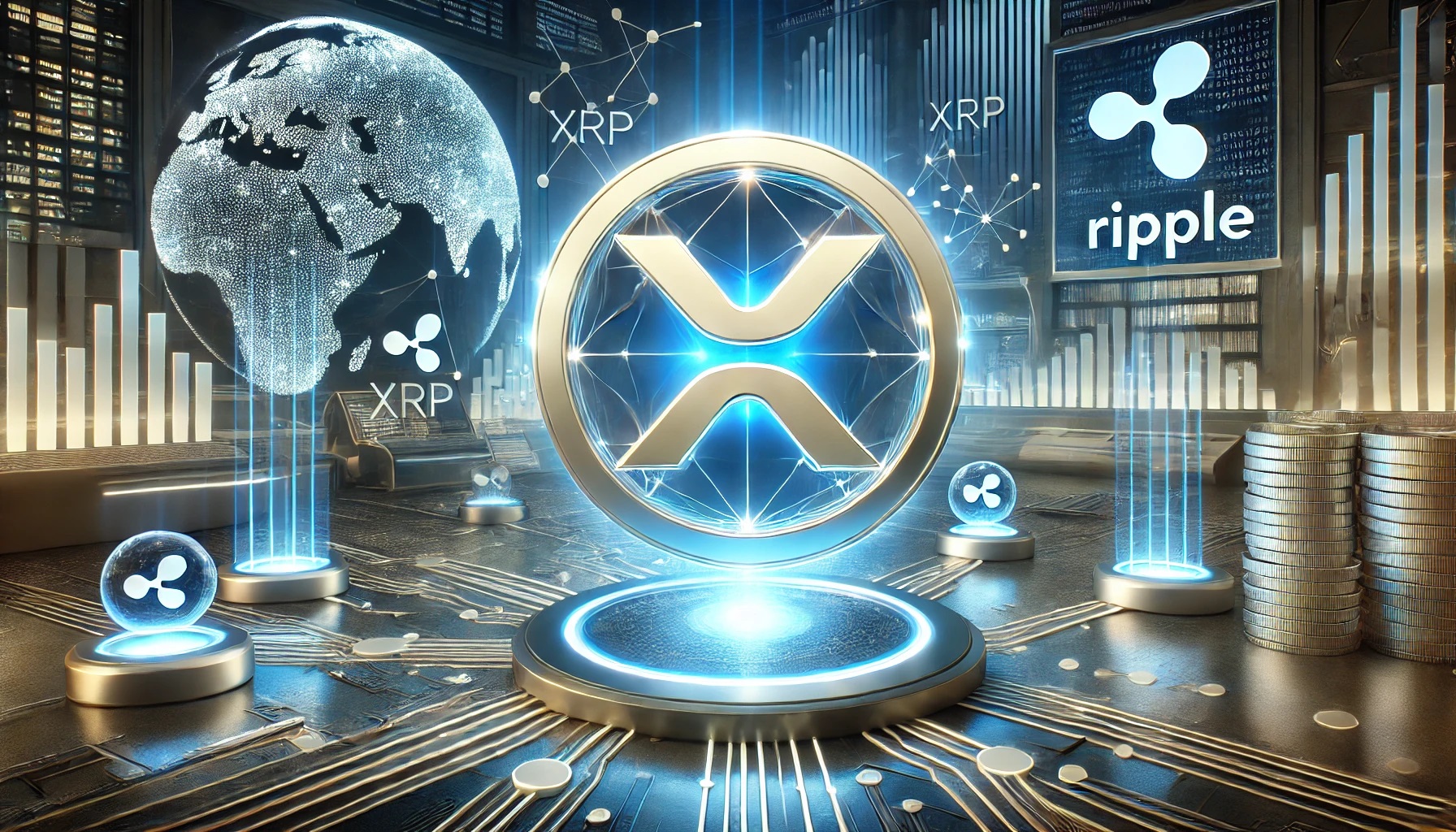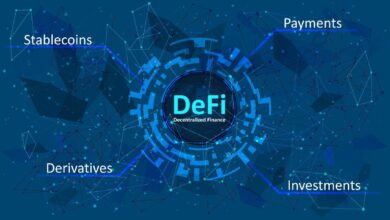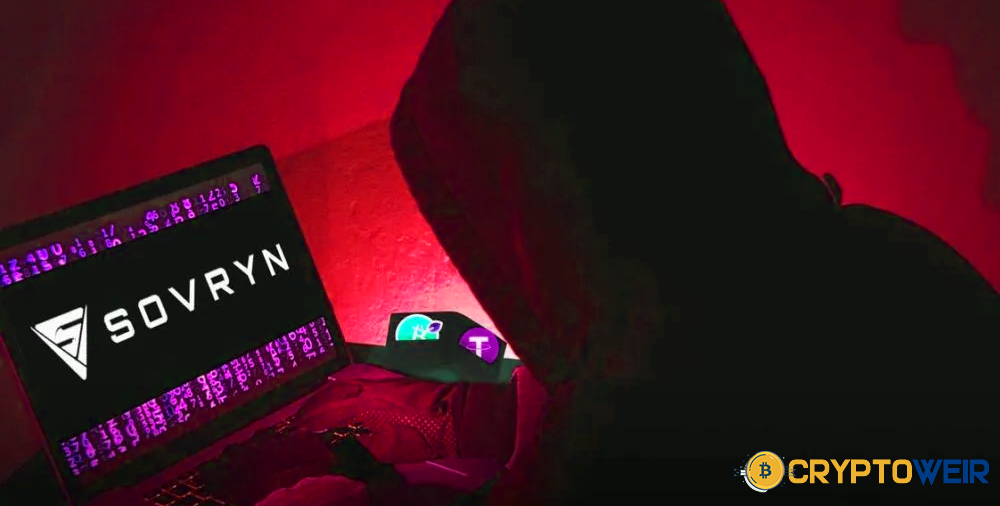Ripple’s Institutional DeFi Vision on XRP Ledger
Ripple’s XRP Ledger is shaping institutional DeFi with compliance-first rails, tokenized assets, and real-world utility at a global scale.

Institutional DeFi stack designed to make on-chain finance practical, compliant, and global. Instead of chasing speculative hype cycles, Ripple’s strategy focuses on real-world asset flows, bank-grade security, and predictable performance. The result is a maturing ecosystem where financial institutions can test, pilot, and scale digital asset operations without abandoning the guardrails they rely on today.
This article explores how Ripple’s vision for institutional DeFi on XRP Ledger is moving from roadmap to reality. We will examine the technology primitives, compliance controls, tokenization standards, liquidity mechanisms, and cross-border payments infrastructure converging into a unified, enterprise-ready platform. We will also consider how tokenized real-world assets, programmable compliance, and interoperability are reshaping treasury, market making, settlement, and custody. Finally, we will outline practical adoption paths and key risks for decision-makers evaluating this new market infrastructure.
Why Institutional DeFi Needs Different Rules of the Game
The earliest phases of decentralized finance proved that open networks can coordinate capital efficiently. But the features that made early DeFi exciting—permissionless access, composability at speed, global liquidity—also revealed limitations for banks, asset managers, and payment companies that answer to regulators. Institutional DeFi demands risk controls, auditability, and settlement certainty that fit existing legal frameworks. It must support KYC/AML, sanctions screening, and clear ownership records for tokenized assets. It must function predictably even during market stress. It must integrate with treasury systems, custody providers, and compliance tools. In short, institutions need DeFi that feels like finance—not a science experiment.
Ripple’s architecture on XRP Ledger (XRPL) leans into this reality. By combining a high-throughput, energy-efficient L1 with native on-ledger payments and exchange rails, Ripple is crafting a venue where regulated entities can deploy digital asset strategies confidently. The aim is not to reinvent finance, but to upgrade financial plumbing with instant settlement, granular programmability, and global interoperability.
What Makes XRP Ledger Suitable for Institutional Workloads
The XRP Ledger was engineered for value movement. Its consensus design and deterministic settlement timelines make it attractive for payments, FX, and market operations where latency and cost matter. But the ledger’s real differentiator for institutional DeFi is the combination of native features that reduce operational complexity.
Native Payments, Issued Currencies, and Built-In DEX
On XRPL, payments, issued currencies (IOUs), and a built-in decentralized exchange coexist at the protocol layer. That means fiat-backed tokens, stablecoins, or RWA instruments can be issued by regulated entities with clear trust lines and transfer restrictions. Liquidity can form organically via the native order book without stitching together external smart contracts. Because these primitives live at L1, routing and pathfinding between assets can be optimized for speed and low slippage, enabling institutional liquidity management without unnecessary complexity.
Predictable Fees and Energy Efficiency
For institutions modeling the total cost of ownership, predictability is paramount. XRPL’s low, stable transaction fees and energy-efficient design help cut variable costs while supporting high transaction throughput. This predictability simplifies pricing, reduces reconciliation headaches, and makes it easier to offer clients on-chain services at fixed rates.
Compliance-First Controls at the Token Layer
Compliance by design is central to Ripple’s approach. On XRPL, transfer restrictions, account blacklisting, and freeze features can be enforced at the token layer by trusted issuers, aligning on-chain operations with regulatory requirements. Coupled with identity attestation and integration pathways for KYC providers, these features allow permissioned flows where needed, without sacrificing the benefits of an open network. For institutional DeFi, these are not nice-to-have features—they are prerequisites.
Also More: Breaking Ethereum DeFi Protocol News Today Latest Updates & Market Impact 2025
Tokenization: From Proofs of Concept to Production Rails
Tokenization promises to transform settlement cycles, collateral mobility, and market access. Yet, many enterprises have struggled to move beyond pilots because tooling was fragmented and compliance unclear. XRPL’s opinionated token model helps institutions standardize how they represent fiat, commodities, money market fund shares, or other real-world assets on-chain. This is where Ripple’s institutional DeFi thesis converges: tokenization that can plug into legacy finance without creating parallel, incompatible silos.
The Role of Trusted Issuers and Custodians
In institutional markets, who issues and who safeguards assets matters as much as the code. XRPL’s design supports regulated issuers, banks, trust companies, and qualified custodians to mint and manage compliant instruments with enforceable rules. These entities can implement whitelists, enforce jurisdiction-based permissions, and integrate off-chain legal agreements with on-chain asset logic. The ledger’s trust line mechanism clarifies relationships between holders and issuers, improving transparency for auditors and regulators.
Programmable Transfers and Settlement Assurance
Settlement risk erodes capital efficiency. With XRPL, escrow features, time locks, and conditional payments can reduce counterparty risk and support atomic delivery-versus-payment flows between tokenized assets and payment tokens. When combined with specialized oracle feeds and institutional-grade key management, institutions can orchestrate complex settlement workflows that finalize in seconds, not days.
Liquidity: The Lifeblood of Institutional DeFi
Without deep, XRP Ledger: reliable liquidity, tokenization is just a bookkeeping trick. Ripple’s vision for institutional DeFi emphasizes mechanisms that attract and stabilize liquidity across asset classes.
Native Order Books and Automated Liquidity
XRPL’s native order-book DEX supports professional market makers who prefer transparent books, while automated liquidity features can help smooth execution for long-tail assets. Institutions can seed liquidity pools for stablecoin pairs, tokenized bonds, or FX corridors that mirror real-world demand. Because fees are low and execution is fast, market makers can rebalance more frequently and reduce inventory risk.
FX as the On-Ramp to Everything Else
Cross-border remittances and treasury FX are natural entry points for institutional adoption. Ripple’s payments network, which intersects with XRPL settlement, XRP Ledger, helps institutions move value between fiat rails and on-chain tokens quickly. Once FX is on-chain, it becomes easier to collateralize positions, fund liquidity pools, and settle tokenized invoices, turning global payments into a gateway for on-chain finance.
Compliance That Scales With Regulation
Regulation is evolving rapidly. What’s considered best practice today will be table stakes tomorrow. Ripple’s institutional DeFi approach doesn’t try to dodge this reality—it leans into it.
KYC/AML Integrations and Policy-Aware Tokens
Rather than forcing institutions to bolt KYC onto protocols after the fact, XRPL’s policy-aware tokens and account-level controls allow compliance teams to set rules that match business lines and jurisdictions. Token issuers can require verified identities, restrict transfers to whitelisted addresses, and enforce transfer limits. Transaction data can be exported for regulatory reporting, and audit trails can prove adherence to AML policies without exposing sensitive client details on-chain.
Custody, Governance, and Operational Resilience
Institutional DeFi lives or dies on operational excellence. Multi-sig controls, hardware security modules (HSMs), and MPC-based key management are now baseline expectations. Ripple’s ecosystem partners provide these capabilities in regulated environments, ensuring that on-chain operations fit within enterprise risk management frameworks. Governance models can be tuned to match corporate policies: for example, high-value token mints may require multiple approvals, while smaller transfers can flow with automated checks.
Interoperability: Meeting Institutions Where They Operate
No serious capital market runs on one chain. Interoperability is essential. Ripple’s approach recognizes that EVM-compatible ecosystems, bank private chains, and public networks will coexist.
Bridges, Sidechains, and Messaging Standards
Institutions need secure bridges and standards-based messaging to move assets across venues without rebuilding middle-office processes each time. XRPL’s ecosystem supports sidechain architectures and connectors that align with ISO 20022 and similar formats, preserving rich payment metadata. This makes it possible to link back-office reconciliation with on-chain settlement and keep compliance data intact across hops.
Open APIs for Treasury and Risk Systems
Treasurers will not abandon their dashboards. Ripple and XRPL partners expose APIs and SDKs that let enterprises embed on-chain actions into existing systems for cash positioning, FX hedging, and liquidity reporting. The winning model is not “rip and replace” but “augment and interconnect”, reducing the cost of change while raising the benefits of real-time settlement.
Real-World Use Cases That Make the Business Case
Institutions adopt new rails when the P&L is obvious. XRP Ledger: The strongest institutional DeFi use cases on XRPL share one trait: they compress time and cost without breaking compliance.
Tokenized Cash and Short-Duration Instruments
Tokenized deposits, stablecoins, and money market fund shares can settle instantly on XRPL while maintaining issuer controls. Corporations can sweep excess cash into tokenized short-duration instruments intraday and redeem just in time for payables, increasing capital efficiency and reducing opportunity cost.
Cross-Border Collections and Supplier Payments
By issuing local-currency tokens and settling through XRPL’s DEX, enterprises can collect in one currency and pay suppliers in another within minutes. With on-chain FX, treasury teams can automate conversion windows and hedge exposures more nimbly. The impact compounds at scale, especially for marketplaces and platforms with multi-currency flows.
Collateral Mobility for Prime and Repo-Like Flows
Institutions can tokenize collateral and move it between venues rapidly. Escrowed settlement and time-locked transfers reduce counterparty risk in prime finance and repo-like arrangements. This improves balance sheet velocity and widens participation, because smaller counterparties can interact on equal footing using standardized on-chain collateral.
Risk Management: What Decision-Makers Must Weigh
No institutional platform is risk-free, and DeFi for institutions comes with its own operational and market considerations.
Liquidity Fragmentation and Counterparty Risk
As more venues emerge, liquidity can fragment across chains and custodians. XRPL’s native DEX helps consolidate order flow at L1, but institutions still need smart order routing and counterparty risk policies for off-ledger bridges. The remedy is architectural: consolidate settlement where possible, and integrate with transparent liquidity venues that align with your compliance perimeter.
Smart Contract and Integration Risk
Even with strong L1 primitives, integration risk sits in the tooling around the ledger: oracles, bridges, custody systems, and ERP connectors. Institutions should certify providers, enforce change management, and document disaster recovery paths. Ripple’s ecosystem increasingly supports audited modules and battle-tested SDKs, but governance remains a shared responsibility across the stack.
Regulatory Drift Across Jurisdictions
Compliance architectures must adapt to jurisdictional drift. Token issuers may need geofencing and jurisdiction-aware transfer policies. The operational answer is to separate policy logic from the base asset and parameterize controls so they can be updated without forking systems.
The Adoption Playbook: How to Get Started Without Breaking Anything
Institutions entering XRP Ledger–based DeFi should start with a narrow, measurable objective and expand in phases. The goal is to de-risk while building organizational muscle memory.
Phase 1: Sandbox a Single Use Case With Clear KPIs
Pick a process that is expensive and repetitive, such as cross-border supplier payments or FX netting between subsidiaries. Work with a regulated issuer to tokenize a relevant fiat currency or settle with a trusted stablecoin. Measure success with hard KPIs: time-to-settle, fee reduction, slippage, and reconciliation accuracy. Keep limits tight and audit trails robust.
Phase 2: Integrate With Treasury and Compliance Systems
Once the sandbox proves value, connect XRPL flows to treasury dashboards, ERP, and compliance tooling. Automate reporting, formalize approval workflows, and integrate identity providers for policy-aware transfers. At this stage, involve the internal audit early to standardize evidence collection.
Phase 3: Scale Liquidity and Expand Asset Coverage
Add liquidity providers and market makers for relevant pairs. Tokenize additional assets—cash equivalents, short-duration notes, or receivables—and expand corridors. Implement redundant custody and MPC key management for operational resilience. Stress-test with simulated outages and market volatility.
Phase 4: Move to Multi-Venue Interoperability
When XRPL operations are steady, add interoperability with EVM venues or private bank chains where appropriate. XRP Ledger: Use standards-based messaging so middle- and back-office processes remain consistent. Establish governance committees that include compliance, security, treasury, and business owners to evaluate new venues methodically.
Why Ripple’s Institutional DeFi Vision Is Accelerating
A convergence of macro forces is pushing institutions toward programmable finance: real-time payments, operational cost pressure, ubiquitous APIs, and regulatory clarity in key markets. XRP Ledger: Ripple’s XRP Ledger strategy meets these pressures with a practical, compliance-aware blueprint. By anchoring payment and exchange rails in the base protocol, then layering policy, identity, and custody, Ripple has positioned XRPL as infrastructure, not merely an app platform. This infrastructure orientation resonates with institutions that prize stability over novelty.
Another accelerant is the growing number of ecosystem partners—from custodians and KYC providers to market makers and oracle networks—building components that slot into enterprise architectures. XRP Ledger: As these components mature, the friction of onboarding falls, pilots shorten, and production timelines shrink. Institutions are discovering they can adopt institutional DeFi step by step, XRP Ledger, without rewriting their entire tech stack.
The Strategic Payoff for Early Movers
Institutions that learn to operate on XRP Ledger ahead of the pack can develop differentiated offerings in global payments, trade finance, and treasury services. XRP Ledger: They can compress working capital cycles, offer instant settlement to clients, and build programmable financial products with transparent rules. Perhaps most importantly, they can reposition their core systems for a future where tokenized assets are not exotic add-ons but the default form of value.
The payoff is not just cost savings. It is strategic agility: the ability to compose new products from on-chain primitives, route value across venues, and leverage global liquidity without intermediaries slowing everything down. That is the essence of institutional DeFi XRP Ledger: as Ripple imagines it—finance that remains compliant and controlled, yet moves at internet speed.
Conclusion
Ripple’s vision for institutional DeFi on XRP Ledger is no longer a distant promise. The core ingredients—compliance-ready tokenization, native exchange and payments, predictable settlement, and interoperability—are maturing in tandem. For institutions, the practical path forward is to align strategic objectives with phased adoption, starting small and integrating deeply. XRP Ledger: As tokenized cash, real-world assets, and on-chain FX gain traction, the competitive advantages compound: better liquidity, faster settlement, and programmable compliance that scales across jurisdictions. The institutions that act now will not just ride the next wave of digital transformation—they will help set the standards everyone else follows.
FAQs
Q: How does XRP Ledger differ from other blockchains for institutional DeFi?
XRP Ledger places payments, issued currencies, and a built-in DEX at the protocol layer, reducing reliance on external smart contracts for basic financial operations. This design supports low fees, fast finality, and policy-aware tokenization, which are essential for institutional compliance. XRP Ledger: For enterprises, that translates into predictable settlement and simpler integrations with treasury and back-office systems.
Q: Can institutions enforce KYC/AML on XRP Ledger?
Yes. XRPL supports token-level controls—including whitelists, transfer restrictions, and freeze features—that issuers can use to align on-chain activity with KYC/AML policies. XRP Ledger: When combined with identity attestation and third-party compliance providers, institutions can operate permissioned flows while retaining many benefits of an open network.
Q: What are the most compelling first use cases?
The clearest early wins include cross-border payments, on-chain FX, tokenized cash equivalents, and instant settlement for supplier invoices or marketplace payouts. These workflows show measurable improvements in speed, cost, and reconciliation accuracy, building confidence for broader adoption, such as collateral mobility and tokenized debt.
Q: How should risk teams think about custody and keys?
Institutions should adopt MPC or HSM-backed key management, multi-sig authorization, and tiered approval policies that mirror existing internal controls. XRP Ledger: Partnering with regulated custodians, XRP Ledger, and using audited integration modules reduces operational risk. Regular disaster recovery exercises and change management are also critical as on-chain volumes grow.
Q: Is interoperability with other chains feasible?
Yes. Ripple’s approach anticipates a multi-chain future. XRPL’s ecosystem supports bridges, sidechains, and standards-based messaging that preserve compliance metadata. XRP Ledger: Institutions can keep XRPL as a settlement hub while interfacing with EVM networks or private bank chains, enabling liquidity access without sacrificing policy and audit requirements.











